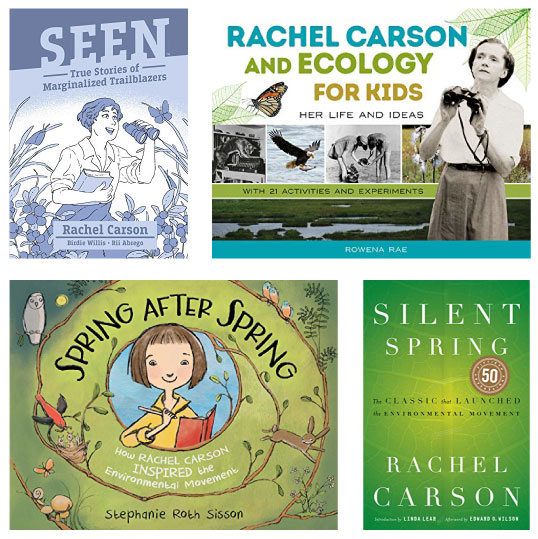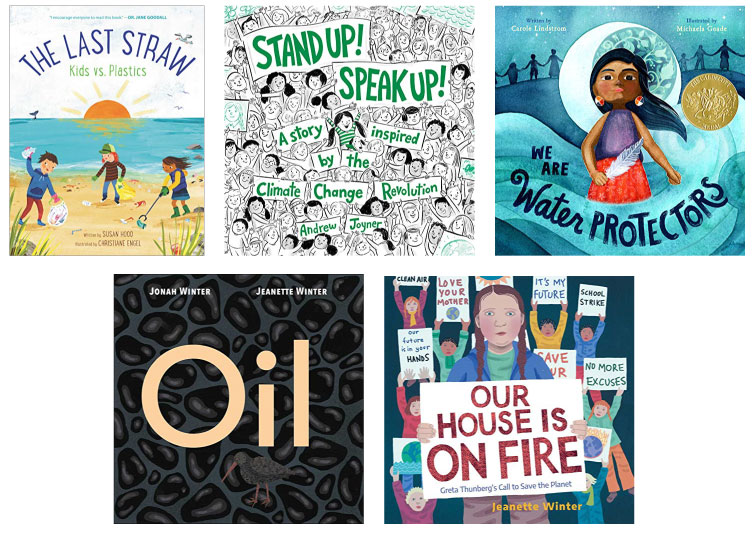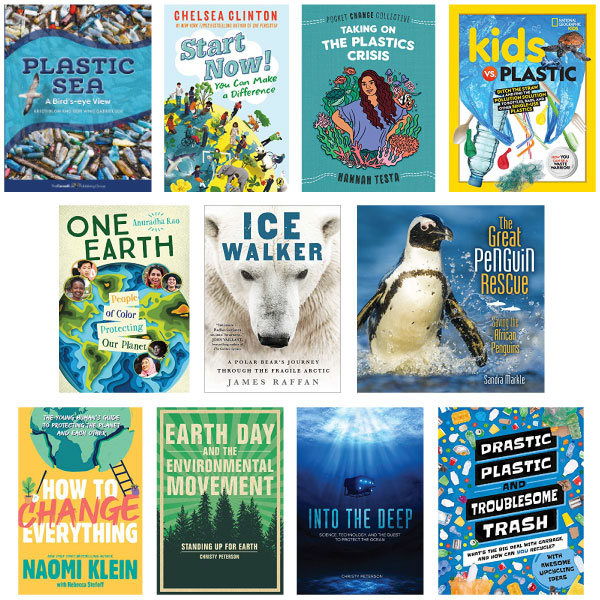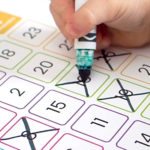Some of my favorite teaching moments were spent after hours with a colleague of mine and a rambunctious group of sixth graders. We started a recycling club and called ourselves the Green Team. The first official business of the club, in fact, was choosing the name. Students excitedly jotted their ideas on paper, and then we took a vote.
During our club meetings, my colleague and I provided the students with lessons about the environment and the importance of recycling, and we guided them in coming up with a plan for starting a recycling program in our school. Students and teachers had been filling trash cans with valuable paper, so our Green Team collected boxes and created recycling signs. They distributed the boxes to each classroom and asked the school to change one small habit: Instead of putting paper into the trash, put it in the box.
Then, each week on the day before recycling pick-up, our Green Team students would run the halls of the middle school collecting the boxes and dumping them into recycling bins.
It was fun and necessary. I mean, it was the year 2014. How were we not already recycling?
But if I had to do it over again, I would do things very differently. Our method was teacher centered. My colleague and I had an agenda, and so we came up with a goal and a plan for how to get it done. Sure, we provided quick lessons to the students so they understood the importance of recycling, but we didn’t consider the brilliant ideas that our students would have had if we had let them follow their own passions.
If I had the Green Team to do over again, I would have done it in the classroom, not after school—at least, not at first. As the English teacher, I would have partnered with the science teacher and the social studies teacher to lead a cross-curricular project on global citizenship surrounding this question: How can I defend the planet? I’d flood the students with fiction and nonfiction books and other resources about the many threats to our planet and inspiring stories of defenders of our environment. I’d let students choose their path and guide their own learning. Then, I’d let them decide what to do about it. Why? Because the 20-30 brains in my classroom, even though not yet teenagers, had a million brilliant ideas and passions that I could have never dreamed of. I was holding my sixth graders back.
In fact, when thinking about how to cause change, I think about all the different roles an environmental activist can play. There are protestors, educators, scientists, writers, and artists. All play an important role in bringing about change, and most likely, any given teacher has a few of each in every classroom.
A great example of these roles working together comes from the story of Earth Day.
Many say that the environmental movement started with a book—scientific in nature, but also a piece of art. In 1962, Rachel Carson’s groundbreaking title Silent Spring was released. It was one of the first catalysts of the environmental movement as we know it today. Within its pages, Carson poetically and passionately revealed the dangers of the pesticide DDT. Before Silent Spring, DDT was celebrated as a major scientific advancement in its ability to kill hundreds of insects at once. It even won a Nobel Prize for the chemist who discovered its many uses. But then, something changed. Through Carson’s words, she shed light on the dangerous side effects, including cancer and genetic damage, to humans; and for the first time in history, the public grew concerned about how our advancements in technology were dangerously affecting the environment.1
To many, this book birthed the environmental movement and was one of the major catalysts that eventually inspired the very first Earth Day in 1970. Of course, there was also the oil spill in Santa Barbara, California, in 1969,2 and the work of Senator Gaylord Nelson from Wisconsin who started a teach-in on April 22, 1970, (the first Earth Day), inspired by momentum behind the anti-war teach-ins of the Vietnam War.3 This movement involved scientists, writers, teachers, political leaders, and protestors. Together, they created change. Earth Day created a more widespread awareness of the effects of our actions on the environment and led to the development of the Environmental Protection Agency and many of our first environmental laws such as the National Environmental Education Act, the Clean Air Act, and the Clean Water Act.4
Our students are global citizens if only we let them be. As educators, we can provide access to books and knowledge, and I think we’ll be amazed what might happen if we let our students do the rest. Maybe they’ll decide to reduce their own plastic use or find a way to educate the wider public. Maybe they’ll write books or create other works of art that will inspire millions. Maybe they’ll plant a tree, or maybe they really will start a recycling program at school. We’ll never know unless we let go of our own agendas. I’m sure that my group of sixth graders back in 2014 were capable of a lot more than coloring recycling signs and dumping boxes of paper into bins.
Books on Rachel Carson

Spring After Spring: How Rachel Carson Inspired the Environmental Movement
by Stephanie Roth Sisson. (ISBN 9781626728196)
Rachel Carson and Ecology for Kids: Her Life and Ideas
by Rowena Rae (ISBN 9780897339339)
Seen: Rachel Carson (Graphic Novel)
by Birdie Willis (ISBN 9781684156481)
Silent Spring
by Rachel Carson (ISBN 9780618249060)
Read Alouds

We Are Water Protectors
by Carole Lindstrom (ISBN 9781250203557)
Oil
by Jonah Winter (ISBN 9781534430778)
Stand Up! Speak Up! A Story Inspired by the Climate Change Revolution
by Andrew Joyner (ISBN 978059330158)
Our House Is on Fire: Greta Thunberg’s Call to Save the Planet
by Jeanette Winter (ISBN 9781534467781)
The Last Straw: Kids vs. Plastics
by Susan Hood (ISBN 9780062981394)
Informational Texts

Drastic Plastic and Troublesome Trash
by Hannah Wilson (ISBN 9781783126439)
Plastic Sea: A Bird’s-Eye View
by Kirsti Blom (ISBN 9781943645503)
Kids vs. Plastic: Ditch the straw and find the pollution solution to bottles, bags, and other single-use plastics
by Julie Beer (ISBN 9781426339103)
The Great Penguin Rescue: Saving the African Penguins
by Sandra Markle (ISBN 9781512413151)
Start Now! You Can Make a Difference
by Chelsea Clinton (ISBN 9780525514381)
Taking on the Plastic Crisis
by Hannah Testa (ISBN 9780593223338)
Into the Deep: Science, Technology, and the Quest to Protect the Ocean
by Christy Peterson (ISBN 9781541555556)
How to Change Everything: The Young Human’s Guide to Protecting the Planet and Each Other
by Naomi Klein (ISBN 9781534474529)
Earth Day and the Environmental Movement: Standing Up for Earth
by Christy Peterson (ISBN 9781541552814)
One Earth: People of Color Protecting Our Planet
by Anuradha Rao (ISBN 9781459818866)
Ice Walker: A Polar Bear’s Journey Through the Fragile Arctic
by James Raffan (ISBN 9781501155369)
References
1 “The Story of Silent Spring.” Natural Resources Defense Council, August 13, 2015. https://www.nrdc.org/stories/story-silent-spring.
2“Earth Day 2021.” History.com, July 7, 2020. https://www.history.com/topics/holidays/earth-day.
3“The History of Earth Day.” Earthday.org. Accessed April 1, 2021. https://www.earthday.org/history/.
4“Earth Day 2021.” History.com, July 7, 2020. https://www.history.com/topics/holidays/earth-day.






